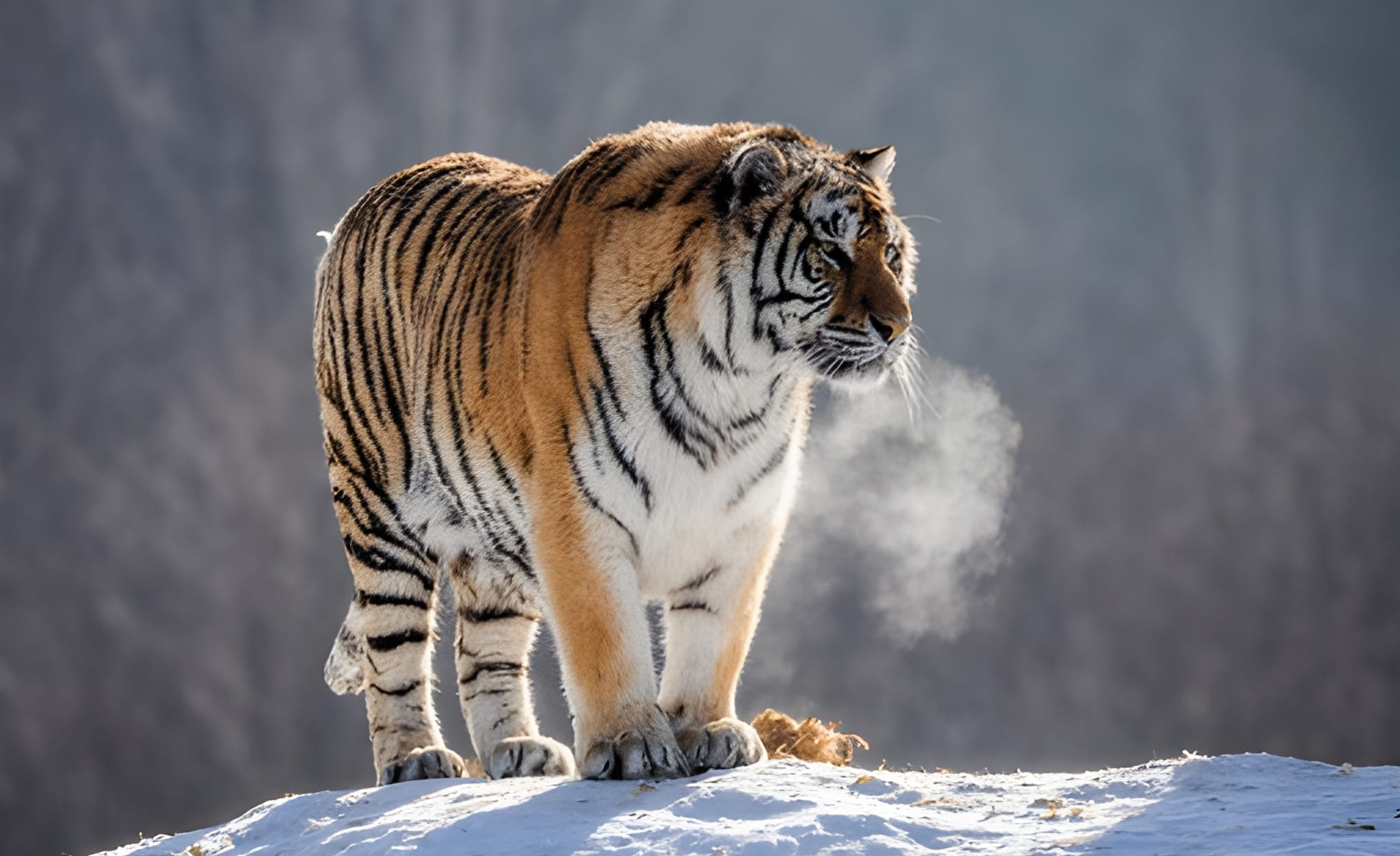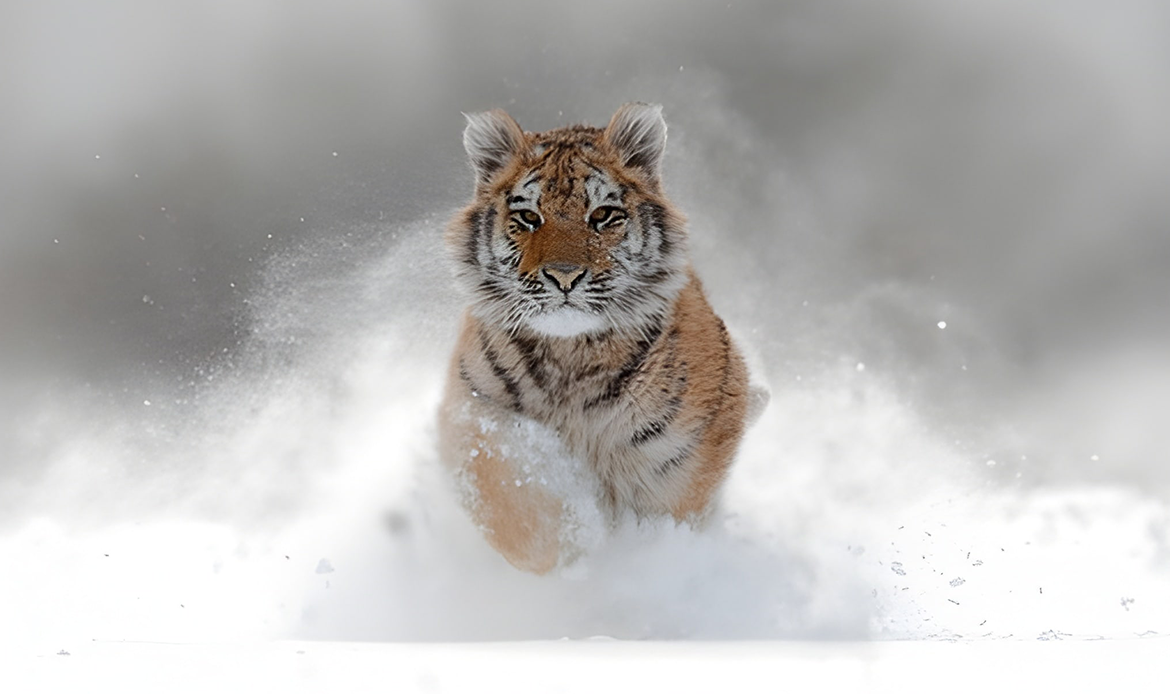
Endangered Species Countdown: How Many Siberian Tigers Are Left in the Wild?
The Siberian tiger (or Amur tiger) is the most well-known big cat on our planet. This majestic big cat, larger and stronger than its fellow tiger species, has long been an icon of wilderness and power. However, the Siberian tiger is also an alarming symbol of the fragile state of many endangered species. Once the king of a vast swath of Asia, the wild population of Siberian tigers all but disappeared from their historic range starting in the 20th century. Conservationists and supporters are now racing against the clock to ensure that this one-of-a-kind predator does not completely die off.
This blog will take you through the current “countdown” of the population, the threats that have led to the possible extinction of the Siberian tiger, and the global efforts to bring it back from its imminent extinction.
Table of Contents
The Siberian Tiger at a Glance
- Scientific name: Panthera tigris altaica.
- Habitat: Russian Far East, with small populations in northeastern China.
- Unique traits: Largest tiger subspecies, thick fur for cold climates, and powerful builds adapted to snowy forests.
- Diet: Deer and wild boar.
Siberian tigers are one of few tiger subspecies that live in some of the most extreme environments on Earth. These cats require vast territories, healthy prey populations, and intact forests to thrive, all of which are constantly under threat.
Population Countdown: How Many Are Left?
Wildlife lovers and conservationists often ask, how many Siberian tigers are left?
- Back in the 1940s, their population had dwindled to fewer than 40 individuals, making them one of the most endangered animals in the world.
- Since then, with protection laws and action against poaching, their numbers have increased.
- It is now estimated that in Russia’s Primorye and Khabarovsk territories, there are approximately 550-600 Siberian tigers left in the wild.
Given this remarkable recovery, they are still classified as endangered. They are still a relatively small, fragmented population that can still rapidly decline if threats are not managed.
Why Are Siberian Tigers Endangered?
The challenges that the Siberian tiger faces provide a parallel to the challenges faced by many other endangered species. There are multiple ways that these majestic animals are being pushed into circumstances that could uproot them.
1. Poaching
- Tigers are hunters for their skin, bones, and other body parts and sell them for money illegally.
- These animals are still under poaching, even with restrictions on a worldwide scale.
2. Habitat
- Anything that requires logging or building huts/cities would without a doubt destroy forests.
- So not only would it be difficult to find a mate, the habitats can be so fragmented by human activity that it will definitely make it harder to find mates or prey.
3. Prey
- Humans are killing all the natural prey that tigers have available to eat, such as deer and wild boar.
- Then what (tigers) have left, they either don’t have enough of it or they are too close to humankind’s territory to eat.
4. Climate Change
- Is it hot enough outside?! (Sigh), and ideally, we need each of breeds to remain a little cooler.
- If we do, feel free to thaw the permafrost and let everything else we change a vegetation patterns do the rest.
All pressures layered together, give you a clear understanding of why the Siberian tiger will always be one of the top five most threatened species.

Conservation Efforts That Give Hope
Despite ongoing challenges, the Siberian tiger is a conservation success story in the making. Here are some of the most prominent efforts:
- Protected Areas: Russia has created reserves such as the Land of the Leopard National Park and the Sikhote-Alin Biosphere Reserve, which protect tiger habitat.
- Cross-Border Cooperation: Russia and China are working together to create wildlife corridors to allow tigers to cross border areas safely.
- Anti-Poaching Patrols: Increased patrols and legal enforcement are taking place to stop illegal hunting.
- Community Involvement: Educating local communities around the importance of wildlife conservation and safe interaction with large predators is being done across the region.
- Scientific Monitoring: Cameras and satellite collars are giving regular updates on tiger movements and overall health.
These measures have played an important part in stabilizing the tiger populations, and in believing that with hard work, wildlife can recover even when at the brink of extinction.
Why Saving the Siberian Tiger Matters?
Some might wonder: why invest so much focus on just one species? The answer is that it matters because of the tiger’s position in nature as an apex predator.
- Ecosystem normalcy: Tigers regulate prey populations; when tigers are present in the ecosystem, prey populations won’t exceed the capacity of the habitat to support them. This prevents overgrazing of plant life and protects healthy forests.
- Cultural significance: In Russian and Asian cultures, faceless tigers embody strength, resilience, and natural heritage.
- Worldwide recognition: The Siberian tiger is the face of extinction discussion. Western interests in the plight of Siberian tigers lead to more awareness of other endangered species.
The Tigers and their habitat are an area in which conservationists can work to secure entire ecosystems, ultimately protecting innumerable other species, including humans.
How You Can Help?
You don’t have to be in Russia to make an impact. Here are suggestions that you could do:
- Support Animal Nonprofits: Give donations to organizations working to protect tigers.
- Raise Awareness: Share information about endangered species on social media.
- Make Eco-Friendly Choices: Mitigate the demand for products that contribute to deforestation.
- Volunteer to Save Animals: There are numerous global traveling programs to the rescue of volunteer tourists and can help with wildlife conservation projects.
- Advocate for Stronger Laws: Push for laws or policy changes to enhance protections to combat poaching or the illegal wildlife trade practices.
Each of these small steps, may seem insignificant, but every action supports the larger effort of protecting wildlife.
Conclusion
The step toward recovery from near extinction for the Siberian tiger is a bittersweet story. It illustrates that while human activity is responsible for the extinction of many endangered species, human intervention can also result in recovery. There is still a long way to go, but with the continued global commitment to wildlife conservation, the Siberian tiger’s roar could echo in the forests for decades to come.
FAQ
1. Q: What is the total number of Siberian tigers that exist in the wild today?
A: There are now estimated to be 550 – 600 remaining in the wild, with the greatest population in Far East Russia, and smaller populations in Northeast China.
2. Q: How do Siberian tigers differ from Bengal tigers?
A: Siberian tigers are generally larger, and lighter coloured, and adapted specifically to colder habitats while Bengal tigers live in warmer climates and habitats (forests/grassland).
3. Q: Why are Siberian tigers endangered?
A: Siberian tigers are endangered due to poaching, habitat destruction/loss, depleted prey, and climate change.
4. Q: Are Siberian tigers going extinct?
A- The tiger population is, and will increase with continued conservation efforts, anti-poaching, and habitat protection.
5. Q: As an individual, what can I do to help save Siberian tigers?
A: You can support nonprofit organisations that work towards saving animals, become an advocate and educator for Siberian tigers, and/or try to live a more eco-friendly lifestyle.
